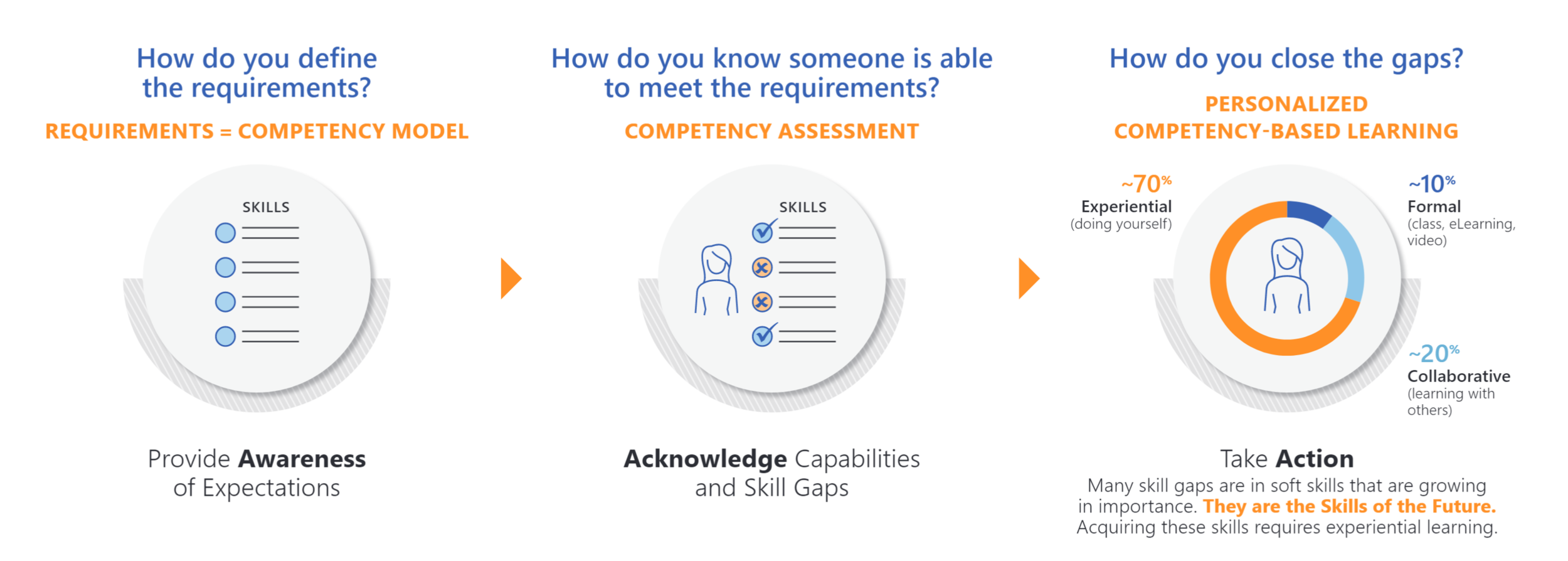Continual Upskilling starts with knowing current skills gaps and providing personalized learning to address them
Why continual upskilling?
There is no doubt that we’ve reached an inflection point. Artificial intelligence and automation are creating a new revolution. CEOs have finally recognized that talent skill gaps may render them unable to compete. So, there’s never a better time to assess the skill gaps in your organization (know how big the problem is) and measure progress over time.
One-time reskilling and upskilling efforts will not be sufficient to deal with transformations in the long-term. Companies and their ecosystems need to build a culture of life-long learning which allows employees to continuously improve their competencies. – World Economic Forum
But it’s also important to make sure both individuals and leaders understand the sense of urgency and ownership.
In the McKinsey & Company paper, Getting ready for the Future of Work, it says:
“Artificial intelligence is poised to disrupt the workplace. For workers of the future, the ability to adapt their skills to the changing needs of the workplace will be critical. Lifelong learning must become the norm – and at the moment, the reality falls far short of the necessity.”
Bob Kegan, Harvard Research Professor in Adult Learning & Professional Development: “It used to be, “I got my skills in my 20s; I can hang on until 60.” It’s not going to be like that anymore. We’re going to live in an era of people finding their skills irrelevant at age 45, 40, 35.”
According to the LinkedIn Learning 2018 Workplace Learning Report, the useful shelf life for a professional skill has shrunk, which means organizations are thinking about continual upskilling. That’s great job security for those of us in talent, learning and development.
In fact, I recently spoke with the new CLO of a company who stated that exact same thing. They anticipate that the bottom 25% of their organization hierarchy will have their jobs either changed dramatically or entirely replaced by automation. Identifying the skill gaps and creating an environment of perpetual upskilling is her top priority.
How do you sell that to leaders?
To make it easy to understand, we have this simple graphic designed to help leaders grasp both the importance of the initiative and also how to execute. Learn to talk them through it and they will support your plans.
Steps to upskill your organization
According to the LinkedIn report author, "Talent development is being asked to play a more strategic role in the business and in workforce planning. This starts with understanding your current skills gaps and creating personalized learning to address them. Next, with a culture of learning and support of the executive team, talent leaders can focus on planning for the future."
Luckily, those with the Self-Directed Learning Engine™ (SDLE) in place can do all of these with ease:
Assess the skill gaps in your organization (competency assessment/skills assessment)
Provide rich capability analytics
Deliver personalized learning to address them iteratively (competency-based learning)
And measure progress over time.
Once you’re using the SDLE, if you need to add any of the critical workforce of the future skills to your competency models, we can help. We have them already defined and ready to use for collaboration, influencing, business acumen, ambiguity and change, digital fluency, data analysis, systems thinking, and learning agility. We have defined corresponding competency-based informal learning to help you build those capabilities. Then you can create a culture of learning that drives continuous upskilling by encouraging each person to add and complete just ONE activity on their development plan every month.
Regardless of the tool you’re using, the important thing is having a self-directed method of getting each person to own their continuous upskilling by embracing lifelong learning.
Read more about a Culture of Learning.



